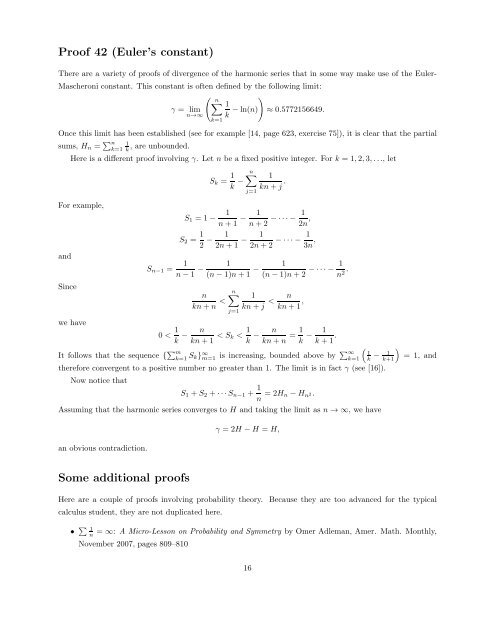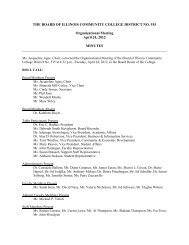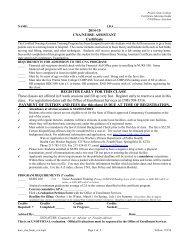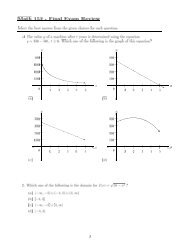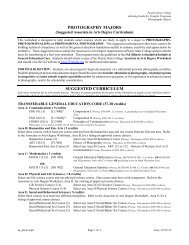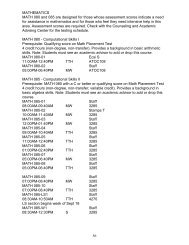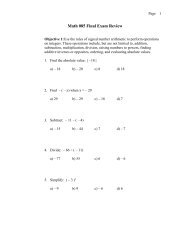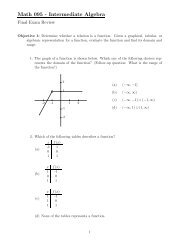Proofs of Divergence of the Harmonic Series - Prairie State College
Proofs of Divergence of the Harmonic Series - Prairie State College
Proofs of Divergence of the Harmonic Series - Prairie State College
You also want an ePaper? Increase the reach of your titles
YUMPU automatically turns print PDFs into web optimized ePapers that Google loves.
Pro<strong>of</strong> 42 (Euler’s constant)<br />
There are a variety <strong>of</strong> pro<strong>of</strong>s <strong>of</strong> divergence <strong>of</strong> <strong>the</strong> harmonic series that in some way make use <strong>of</strong> <strong>the</strong> Euler-<br />
Mascheroni constant. This constant is <strong>of</strong>ten defined by <strong>the</strong> following limit:<br />
<br />
n<br />
1<br />
γ = lim<br />
n→∞ k −ln(n)<br />
<br />
≈ 0.5772156649.<br />
k=1<br />
Once this limit has been established (see for example [14, page 623, exercise 75]), it is clear that <strong>the</strong> partial<br />
sums, Hn = n k=1 1<br />
k<br />
, are unbounded.<br />
Here is a different pro<strong>of</strong> involving γ. Let n be a fixed positive integer. For k = 1,2,3,..., let<br />
For example,<br />
and<br />
Since<br />
we have<br />
Sn−1 = 1<br />
n−1 −<br />
Sk = 1<br />
k −<br />
n<br />
j=1<br />
1<br />
kn+j .<br />
S1 = 1− 1 1 1<br />
− −···−<br />
n+1 n+2 2n ,<br />
S2 = 1 1 1 1<br />
− − −···−<br />
2 2n+1 2n+2 3n ,<br />
1<br />
(n−1)n+1 −<br />
n<br />
kn+n <<br />
n<br />
j=1<br />
1<br />
kn+j<br />
1 1<br />
−···−<br />
(n−1)n+2 n2. < n<br />
kn+1 ,<br />
0 < 1 n<br />
−<br />
k kn+1 < Sk < 1 n 1 1<br />
− = −<br />
k kn+n k k +1 .<br />
It follows that <strong>the</strong> sequence { m<br />
k=1 Sk} ∞ m=1 is increasing, bounded above by ∞<br />
k=1<br />
<br />
1 1<br />
k − k+1<br />
<strong>the</strong>refore convergent to a positive number no greater than 1. The limit is in fact γ (see [16]).<br />
Now notice that<br />
S1 +S2 +···Sn−1 + 1<br />
n = 2Hn −H n 2.<br />
Assuming that <strong>the</strong> harmonic series converges to H and taking <strong>the</strong> limit as n → ∞, we have<br />
an obvious contradiction.<br />
Some additional pro<strong>of</strong>s<br />
γ = 2H −H = H,<br />
= 1, and<br />
Here are a couple <strong>of</strong> pro<strong>of</strong>s involving probability <strong>the</strong>ory. Because <strong>the</strong>y are too advanced for <strong>the</strong> typical<br />
calculus student, <strong>the</strong>y are not duplicated here.<br />
• 1<br />
n = ∞: A Micro-Lesson on Probability and Symmetry by Omer Adleman, Amer. Math. Monthly,<br />
November 2007, pages 809–810<br />
16


